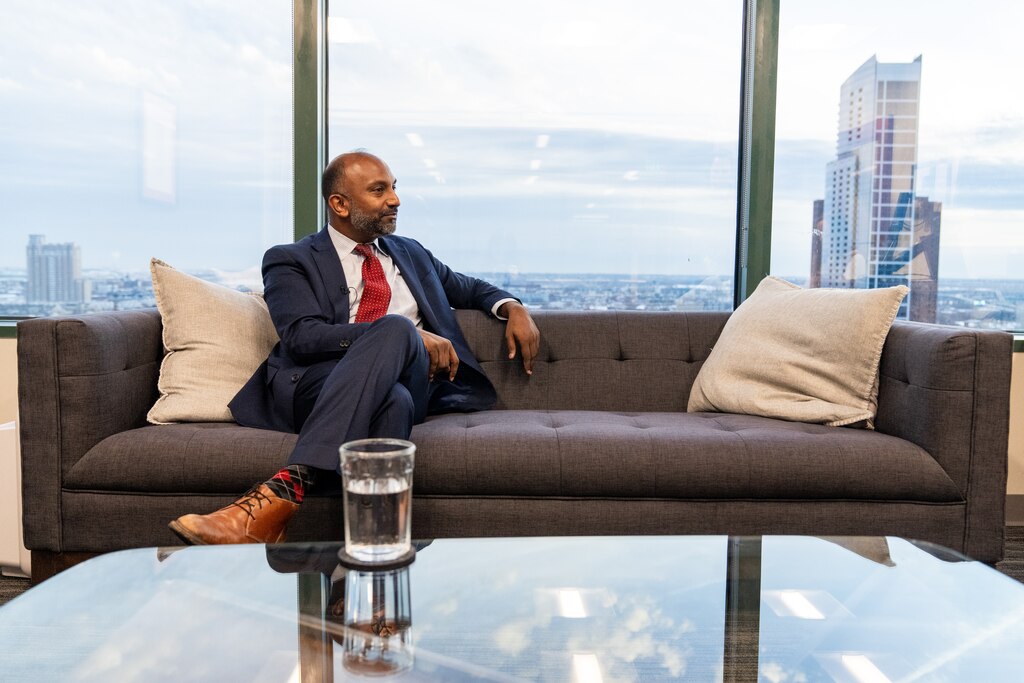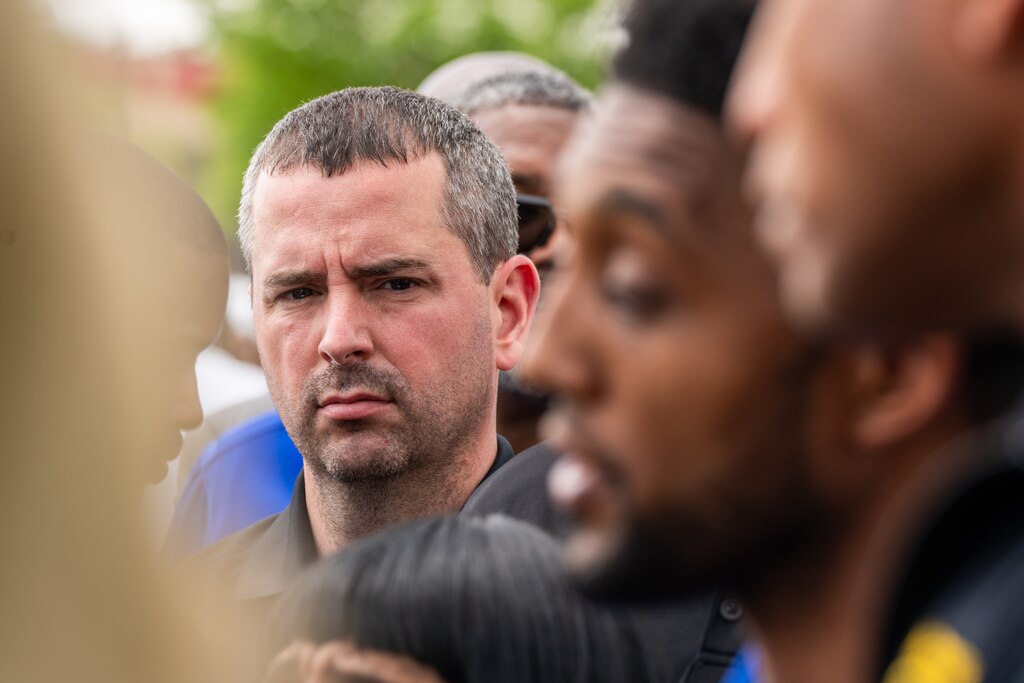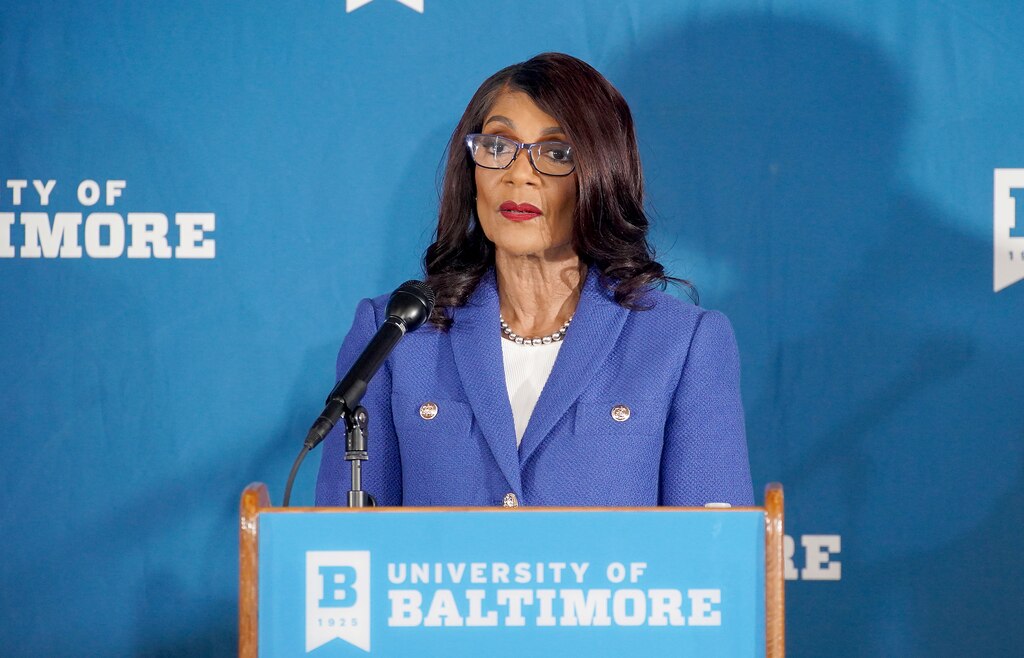Even with how crazy U.S. politics has become, 2024 was quite a year — and that’s before adding a wild primary for Baltimore mayor and the most expensive political race in Maryland history for U.S. Senate into the mix.
Here’s a reminder of just some of the things that happened:
Someone tried to assassinate the president-elect — twice.
Two Baltimore County businessmen threw stacks of cash at city elections and failed.
The Baltimore Banner thanks its sponsors. Become one.
Cabinet nominee Robert F. Kennedy Jr.’s seemingly endless run-ins with dead animals came to light.
But there were also stories that we just couldn’t forget. Here are six stories The Banner’s political team can’t stop thinking about.
Do as Hogan says, not as he does
Former Maryland Gov. Larry Hogan had an overarching message for voters during his U.S. Senate campaign: You can trust the Republican to be an independent voice and work across party lines. He even ran an ad featuring people who cast a Democratic vote for president but chose Hogan for Senate.
But Hogan left his choice for president blank, a decision his opponent, Democratic Prince George’s County Executive Angela Alsobrooks, said should have disqualified him for the job.
Hogan said he would never vote for someone he didn’t believe in, and that included both main presidential candidates.
The Baltimore Banner thanks its sponsors. Become one.
Hogan ran as a never-Trumper, and sticking to his principles also meant surrendering his share of the American franchise.
”I think a lot of people respect that decision,” he said outside his Election Day polling place.
But during a televised debate Alsobrooks said the job of a U.S. senator requires taking “tough votes” and skewered Hogan’s bipartisanship pitch, given he didn’t vote for Vice President Kamala Harris, a Democrat.
“This is the most bipartisan thing you can do,” she said.
It was Hogan’s third time rejecting Trump as his party’s nominee. In 2016, he wrote in the name of his father, Larry Hogan Sr., a former member of Congress and executive of Prince George’s County. And in 2020 Hogan wrote in a vote for late President Ronald Reagan.
The Baltimore Banner thanks its sponsors. Become one.
Hogan lost to Alsobrooks in November.
— Brenda Wintrode
Thiru won’t go away

Whether it’s calling a press conference with a grieving family whose loved one was the victim of a tragedy, tapping into resident anger at an imperious utility or jumping into the harbor to emphasize environmental promises, Thiru Vignarajah knows what makes good TV.
In fact, if there is one thread that links seemingly every hot-button issue in Baltimore, it is Vignarajah.
In classic Vignarajah fashion, he made headlines not for the substance of his mayoral campaign last spring but for how he ran it. In May, just as the race was reaching fever pitch, Vignarajah dropped out and endorsed Mayor Brandon Scott’s chief opponent, former Mayor Sheila Dixon. The Baltimore Banner reported Vignarajah shopped his endorsement to Scott in exchange for becoming police commissioner or schools CEO — an outlandish quid pro quo considering Vignarajah has never been a police officer or worked in education.
The Baltimore Banner thanks its sponsors. Become one.
Complicating matters, Vignarajah relied heavily on Baltimore’s new public financing system. The way he dropped out rankled some members of City Council who questioned whether he would pay back the money, which he did.
That wouldn’t be the end of Vignarajah’s year in politics.
He popped back up in September, when he, along with a handful of supporters, made a legal challenge to a ballot question to redevelop the Inner Harbor.
Vignarjah was shrewd, successfully bringing the case to a Republican-appointed judge in Anne Arundel County, and initially his big win seemed like it was finally here.
Until it got to the Supreme Court, where the spectacle ratcheted up. Vignarajah got insulted in formal briefings by city attorneys — a sophist engaging in “curious intellectual party tricks” — and then the court ruled against him in another high-profile defeat.
The Baltimore Banner thanks its sponsors. Become one.
But, if we’ve learned anything, it’s that Vignarajah will be back.
— Lee O. Sanderlin
Bronze Star backfire

You don’t have to know much about Gov. Wes Moore to think that guy might be going places — that he might even have “What It Takes,” so to speak.
The charismatic first-term governor has been a fundraising powerhouse for national Democrats and competent foot soldier on behalf of Joe Biden, and then Harris, in the 2024 campaign.
But in August the New York Times unveiled what looked like a major blemish: Moore had claimed on a 2006 White House application a Bronze Star he had not been awarded. Moore’s camp circled the wagons, putting reporters in contact with a former superior officer and trying to explain what happened. Murmurs about whether Moore had inaccurately claimed a Bronze Star had simmered since his 2022 gubernatorial run.
The Baltimore Banner thanks its sponsors. Become one.
The political fallout was mixed. Some veterans said Moore shouldn’t have claimed the commendation, a bunch of Democratic veterans came to his defense, and a lot of people didn’t feel strongly one way or the other. One military historian and veteran who investigates claims of stolen valor said Moore probably had earned the commendation and the military didn’t follow through.
And, lo and behold, the military followed through just before Christmas. The senior officer from Moore’s unit pushed the Army to reconsider the application, and Moore received his commendation Dec. 20.
But also interesting is the story behind the story. Someone tipped the New York Times off about the exact document to request. The Bronze Star controversy was likely an uncomfortable week for Moore, but the timing was favorable. Now he has that Bronze Star, and gone is a potential political liability standing between Moore and his future.
— John O’Connor
Costello’s swing and miss

We expected competitive races to emerge out of this past election cycle, but no one could have been prepared for just how razor thin, and downright exciting, some of these local contests turned out.
It’s a reminder that, even in deep-blue Baltimore, every vote counts — and no contest is over until it’s over.
This year’s show-stealing moment came about a week after Election Day, well after Mayor Brandon Scott’s decisive primary election victory (and maybe The Banner’s best politics photo of all time). As volunteers tallied the final mail-in ballots, Baltimore Councilmember Eric Costello — a political dynamo with high-ranking allies and sharp fundraising acumen — saw his early, slim lead gradually slip away. A small band of Costello supporters watched it all slowly go down in shock at the city’s board of elections warehouse in West Baltimore, surprised to see him on the losing end for the first time in his career.
Ultimately, Costello conceded to challenger Zac Blanchard on social media, ending a two-term career that included stints as the chairman of the city budget committee — and continuing a long streak of mostly declining to speak to reporters.
The only councilperson that Moore endorsed, Costello may have earned his reputation as an effective get-things-done city servant and watchdog of government agencies. But perhaps he sealed his fate after throwing his heft behind Dixon; Costello was reported to have made a deal to become city administrator had she won.
There were other signs that Costello’s heart just wasn’t in it. According to public campaign finance reports, he was slow to spend his gobs of campaign cash until about a month out from the primary.
And it wasn’t just Costello: District 12 incumbent Robert Stokes fell by an almost equally thin margin to labor organizer Jermaine Jones after two terms and decades behind the scenes in city politics. With the backing of trade groups, labor organizations and many individual donors, Jones pulled off an unlikely victory in a district generally unfavorable to newcomers.
— Hallie Miller
A metaphor for Baltimore ... and a political campaign

Baltimore has about 2,000 miles of roadway, but three blocks of North Avenue were almost constantly on Dixon’s mind and in her mouth this spring.
The stretch, sandwiched between Poplar Grove Street and Bloomingdale Road in West Baltimore, became a fixture of her stump speech as she made her push to reclaim her mayoral seat — even if she lacked the courage to visit the area.
“These young people are hanging out early in the morning to late in the afternoon,” Dixon said during one news conference, lamenting, as she often did, people loitering outside businesses.
In an interview with The Baltimore Banner, Dixon said the area was front of mind because she passed it frequently on her way to her office and gym. She complained that Baltimore police were not writing citations there, effectively clearing the sidewalk.
But, when area resident and activist Crystal Parker challenged Dixon to come do something, Dixon was forced to admit she hadn’t been willing to get out of her car.
“I know some former officers that still carry,” Dixon told The Banner, suggesting she wouldn’t visit the area without protection. “I’ve been strongly considering going down to those businesses and asking them what’s going on.
“I’m not saying they’re doing something, but something’s going on,” she added.
— Emily Opilo
A year of endless campaign ads
In Maryland politics, this seemed to be the year of endless campaign spending, mostly on commercials.
There was such a blitz of negative ads in the general election for U.S. Senate between Alsobrooks and Hogan that you might be forgiven if you forgot the Democratic primary between Alsobrooks and David Trone featured even more ads.
The ads were inescapable if you turned on the TV or logged on to social media.
There was Trone, hauling a lectern on a trailer, promising to use his voice for mental health and justice reform; then there were Prince George’s elected officials, touting Trone as someone who would get things done. (One version of the ad was edited to remove an official implying Alsobrooks would need “training wheels.”)
Trone, a congressman and the wealthy founder of Total Wine & More, poured $62 million of his own money into his campaign.
Later, in the general election, it was Hogan’s face on the screen, with a narrator reminding voters of his two terms as governor. Or it was Hogan’s daughters saying he could be trusted to protect women.
Then there were the attack ads from outside groups, mostly trying to benefit Hogan by blasting Alsobrooks. One alleged Alsobrooks had “too much baggage” as suitcases rained down behind a picture of her. Another painted Alsobrooks as among “corrupt” politicians in Prince George’s for improperly receiving property tax breaks. Several featured the tried-and-true style of unflattering, black-and-white photos of Alsobrooks.
The attack ads mainly came from outside groups. The biggest spender was a super PAC called Maryland’s Future that dropped about $30 million on ads to blast Alsobrooks in hopes of boosting Hogan.
To be sure, Alsobrooks was no slouch at raising and spending cash, with her campaign reporting about $30 million spent. And she also was the beneficiary of about $3.8 million worth of outside spending, according to the campaign finance tracking website OpenSecrets.
But, with the total spending on the race topping $160 million, more was spent against Alsobrooks than on her behalf.
Despite that, the races weren’t even close. Alsobrooks toppled Trone by about 10 points and beat Hogan by nearly 12. She’ll be sworn in as a U.S. senator Jan. 3.
So while money does matter in elections — it’s impossible to get a message out to voters without money — this race goes to show that spending the most does not guarantee victory.
— Pamela Wood




Comments
Welcome to The Banner's subscriber-only commenting community. Please review our community guidelines.